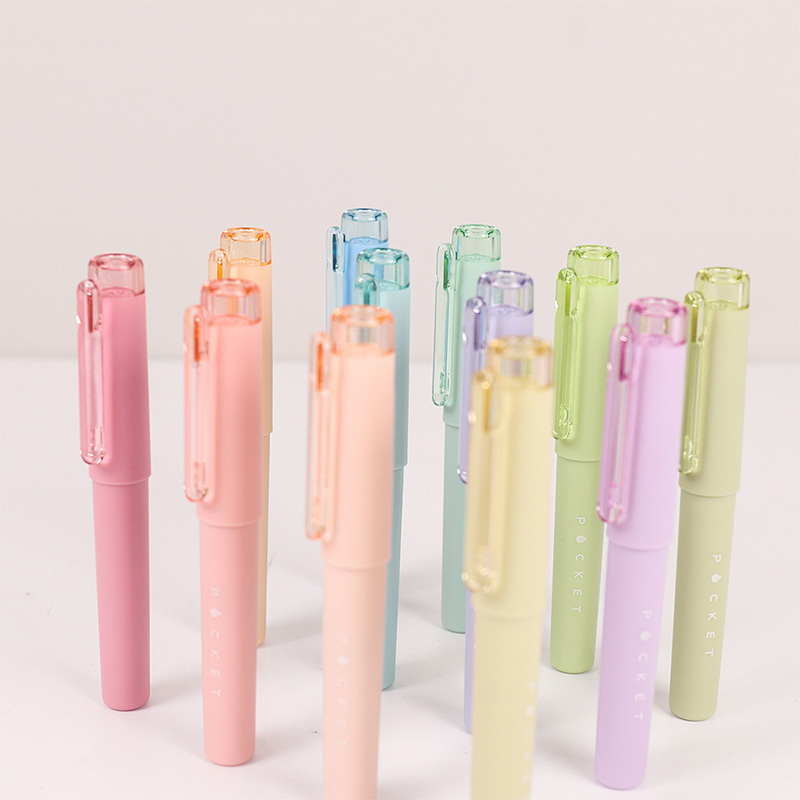Once seen primarily as classroom essentials, highlighters have expanded their role far beyond traditional education. These vibrant writing tools are now found across a broad spectrum of professional, creative, and personal settings—from law firms and medical offices to design studios and corporate boardrooms. With advancements in ink technology, tip design, and usability features, highlighters have become indispensable instruments for organizing, emphasizing, and streamlining information in fast-paced environments.
Today’s highlighter is no longer just about coloring over text—it's about enhancing productivity, improving visual communication, and bringing structure to complex data in a visually engaging way.
Highlighters in the Modern Workplace
In office environments, highlighters are key tools in document analysis, project planning, and administrative review. Legal professionals use them to color-code contract clauses, while accountants highlight figures in financial reports. Human resource teams use them when sorting resumes, noting skills or keywords at a glance.
The color-coded clarity offered by highlighters helps teams prioritize tasks, categorize data, and track project progress more effectively. Whether reviewing a printed report or collaborating on a physical workflow board, the use of bright, attention-grabbing highlights helps streamline decision-making.
Digital Paper Still Thrives—And So Do Highlighters
Despite the rise of digital note-taking, highlighters remain relevant due to the continued use of printed materials. In many industries, from healthcare to logistics, hard copy documents are still standard for compliance and fieldwork.

Professionals in these sectors often rely on highlighters with smudge-proof ink and quick-drying formulas, ensuring efficiency in fast-paced, paper-heavy tasks. The tactile nature of paper-based highlighting also allows for better concentration and retention, making it especially useful in time-sensitive or information-dense work.
Expanding Utility in Creative and Design Fields
Highlighters are increasingly used in creative fields, not just for marking text but for sketching, color-blocking, and ideation. Graphic designers and content planners use color-coded highlights on storyboards and visual layouts. Architects and engineers rely on soft pastel highlighters to map project phases or annotate drawings without obscuring underlying details.
Moreover, bullet journaling and planner communities have embraced highlighters as both functional and decorative tools. Soft-tip and dual-tip highlighters allow users to add subtle color accents to daily planners, calendars, and journals, blending utility with aesthetics.
This cross-functionality has led to a surge in consumer demand for multi-color, artistically styled highlighters that align with evolving creative habits and visual preferences.
Innovation in Ink and Design
The highlighter market has seen notable advancements in ink and design over the last few years. Traditional fluorescent yellow is now joined by an array of hues—pastels, neons, metallics, and even erasable varieties. These options provide users with more flexibility in how they mark and categorize information.
New formulations include quick-dry ink, non-bleed features, and odorless options, enhancing usability on various paper types without smearing or saturating pages. This is especially useful for those who work with double-sided documents or delicate pages, such as in archival research.
From a design standpoint, ergonomic barrels, translucent tips for precision, and dual-end models (combining fine and broad tips) are becoming standard. These enhancements address user comfort while offering more control over mark size and placement.
Eco-Friendly and Refillable Options Gain Ground
As environmental sustainability becomes a top consumer concern, stationery manufacturers are responding with eco-conscious highlighter options. Refillable models, recyclable barrels, and water-based inks are being incorporated into new product lines to meet growing demand for greener office supplies.
Some brands now offer refill stations for highlighters—mirroring similar trends seen in fountain pens and gel ink pens—allowing schools and businesses to reduce plastic waste while saving on bulk purchases.
Sustainability efforts are particularly appealing to educational institutions and corporate procurement teams aiming to meet environmental targets without compromising on functionality.
Growing Demand in Global Markets
Highlighters continue to see strong demand globally, especially in regions with rapidly growing education sectors. Asia-Pacific remains a significant driver of market growth, fueled by rising student populations and increasing investment in education infrastructure.